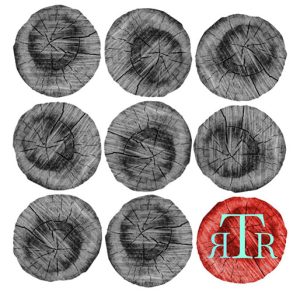High Desert Journal – Fall 2008
Issue 8
Fall 2008
Biannual
Rachel S. King
In a note from the editor, Elizabeth Quinn says that her “inspiration for High Desert Journal was to create a platform for artists and authors living in and inspired by a place that is often times overlooked for its cultural resources.” This journal accomplishes her intent: it shows that art takes place and that artists live outside major metropolises.
In a note from the editor, Elizabeth Quinn says that her “inspiration for High Desert Journal was to create a platform for artists and authors living in and inspired by a place that is often times overlooked for its cultural resources.” This journal accomplishes her intent: it shows that art takes place and that artists live outside major metropolises.
High Desert Journal gives more space to visual art and essays than many literary journals. Megan Murphy and Alan Brandt’s photography, Patricia Freeman-Martin’s paintings, and Tom Foolery’s “Miniature Environments” all receive at least a couple of pages. And the essays, as well as (yet better than) all the other genres, give the journal a sense of place.
In “Calving Season,” Michelle Theriault writes about Oregon’s Jordan Valley, a place on the edge of Nevada and Idaho; a region with probably the smallest population density in the continental United States. Through interviewing and observing the Pascoe family, in the area for seven generations, Theriault writes about the people and the place of both the past and present.
In “San Joaquin Fever,” Aaron Gilbreath tries to convince the reader that California’s Central Valley is just as spectacular as Yosemite and the Redwoods, in a different way. And Diane Josephy Peavey uses her own experience as a sheep and cattle ranch owner in Idaho to sympathize with and tell the story of Palestinian ranches to which Israelis have denied the owners access.
The most poetic essay is Charles Bowden’s “Mama’s Gone to Dreamland on the Train,” which uses anecdotal history to tell of the settlers and Native Americans, past and present, who have lived and live on North Dakota’s plains: “They would arrive in boxcars and that first winter, live in sod huts, seven, eight, nine, 10 to a small one room dwelling . . . When death came in the winter, the body went into the barn until spring, when the roads let the neighbors gather for the burying – a body wrapped in a quilt, resting on an old door, the whole thing balanced on buckets lest the mice get to the dead.” The essay jumps from one family to another; its form reminds me of a patchwork quilt: each story part of the plains, the place the people call home.
A couple pieces of fiction and poetry round out the High Desert Journal, a journal for all readers, but especially those who live in America’s high desert and who might doubt that their area inspires creativity.
[www.highdesertjournal.com/]




